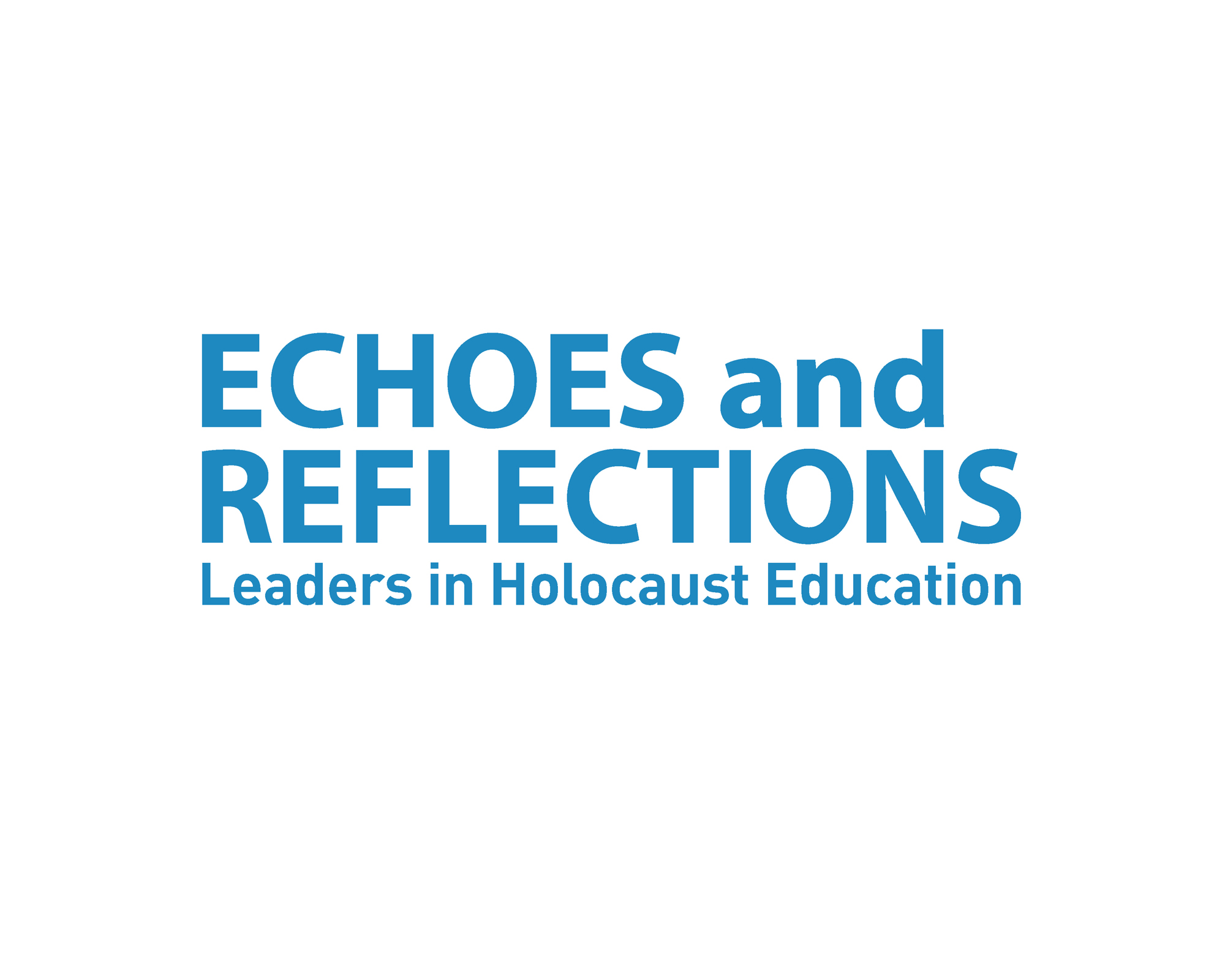Back to School with Echoes and Reflections - Part 2

Today continues a 10-part series called “Back to School with Echoes and Reflections.” Each installment takes a detailed look at one of the 10 Echoes and Reflections lessons.
Echoes and Reflections is a multimedia professional development program for secondary school teachers in the United States that provides them with accurate and authentic Holocaust information for their classrooms. Programs are held around the country at no cost to teachers or schools, and participants receive a complimentary copy of the 10-part Teacher’s Resource Guide that equips them with the tools they need to help today’s students study the Holocaust as a significant event in human history.
Echoes and Reflections combines the resources and competencies of three world leaders in education―the Anti-Defamation League’s experience in curriculum and professional development, access to USC Shoah Foundation’s Visual History Archive of survivor and witness testimonies and digital educational tools, and Yad Vashem’s historical expertise and primary source materials―resulting in the most comprehensive Holocaust education program available.
Echoes and Reflections includes everything educators need to teach the complex issues of the Holocaust. Each lesson within the Echoes and Reflections Teacher’s Resource Guide explores a different aspect of the Holocaust and encourages students in grades 6-12 to build an authentic and comprehensive portrait of the past as they frame their own thoughts, resulting in a deeper level of interest and inquiry.
The modular design of the Echoes and Reflections Teacher’s Resource Guide includes photographs, literature, artwork, diary entries, government documents and other primary source materials that teachers may easily photocopy and distribute to students. Lessons also incorporate testimony from USC Shoah Foundation’s Visual History Archive on DVD Each lesson addresses Common Core State Standards, and each one has been integrated into IWitness. IWitness is USC Shoah Foundation’s educational website that provides students and teachers access to more than 1,300 full life histories and testimonies of survivors and witnesses to the Holocaust and other genocides from the Visual History Archive for guided exploration, multimedia projects, activities and lessons.
To date Echoes and Reflections has prepared almost 20,000 educators and community leaders across the United States to use the Teacher’s Resource Guide effectively. Teachers interested in more information about Echoes and Reflections should contact echoes@adl.org.
Lesson 2: Antisemitism
In Lesson 2, students learn about pre-war Jewish life in Germany and the origins of antisemitism.
To begin the lesson, students watch clips from three testimonies in the Visual History Archive. John Graham, H. Henry Sinason and Margaret Lambert each describe how they felt about Germany before the war and what relations were like between Jews and non-Jews. Teachers show a map of Jewish communities in Europe before the war, and then three more clips of interviewees discussing the changes in German attitudes toward Jews and the introduction of Nazi ideology to schoolchildren.
Teachers then carefully review the definition of stereotype, inviting students to recall different stereotypes they have encountered in their own lives. Students read and discuss the secondary-source document Summary of Antisemitism, which details the reasons and events that led to the Nazis’ hatred of Jews.
The lesson shifts to a discussion about the 1993 “Not in Our Town” campaign in Billings, Mont., in which the town united to condemn hate after acts of racism were committed against several residents. Teachers lead a discussion about the similarities between Nazis and hate groups today, as well as the risks and rewards the citizens of Billings faced when they took action against what was happening in their community. Inspired by “Not in Our Town’s” expansion to other communities, teachers may assign students to create” Not in Our Town” posters individually or in groups.
The final part of the lesson is Nazi propaganda. Students watch testimony in which Henry Laurant and Esther Clifford talk about how they were treated by other children who were influenced by Nazi rhetoric and the Hitler Youth movement. Teachers explain the tactics that make propaganda work and show students examples of Nazi propaganda. The lesson ends with a class discussion about how Jews were dehumanized through the propaganda, the effects of the propaganda on ordinary German citizens, and even current events that still demonstrate antisemitism and propaganda.
To integrate IWitness into Lesson 2, teachers may find other clips in IWitness about antisemitism in schools.
Next week – Lesson 3: Nazi Germany